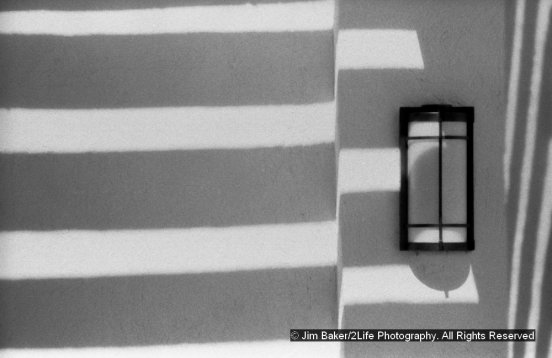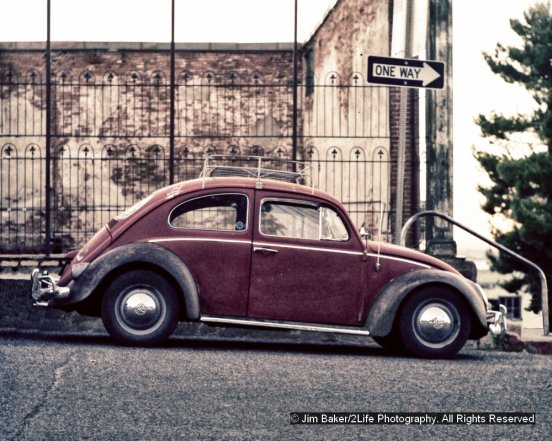Thrift stores can be a fantastic place to find cameras; I’ve bought some of my favorites at assorted thrift stores. There’s a lot of junk there, too, but every once in a while I run across something really interesting or that I’ve not seen before.
This was the case one night when I stopped in at a thrift store in north Phoenix. There was a number of cameras sitting out on the shelf, and another customer was dithering because she had registered for a photography class and didn’t know which to get. I pointed her towards the K1000 in her left hand, and she put the others down and went and purchased the K1000.
Good choice.
I don’t remember what the other cameras were — which tells me they weren’t anything special — but a pair of lack leather cases caught my eye. There were a camera and an extra lens in black leather cases that were clearly Japanese, resembling the school bags Japanese students carried to school when I lived there.
I had never heard of a Beseler Topcon Auto 100 before, but it did look like fun and it was cheap, which meant it wanted to come home with me. As far as I can tell, the camera is complete down to the original skylight filter and lens caps, completely original, almost mint condition, and actually kind of pretty. The leather strap appears to be original to the camera, and the little black leather case contains the lens hood. Seems a lot of case for a little bit of hood.

A Little History
Established in 1932, Topcon is a manufacturer of optical equipment for ophthalmology and surveying. The company’s first camera was made in 1937, and Topcon released the first SLR camera in the world that featured TTL full-aperture metering. In the 1960s, the US Navy selected the Topcon Super-D as its official camera, and continued to use the Super-D until production ended in 1977. Currently, Topcon manufactures high-spec GPS, laser positioning, and medical equipment, but no longer produces cameras.
This particular model was released in 1964 in Europe as the Topcon UNI and imported into Australia and New Zealand by Hanimex RE Auto. In the US, the Beseler Corporation. known primarily for its enlarger, imported it as the Auto 100. The Auto 100 differs from most 35mm SLR cameras in that it uses a leaf shutter rather than a focal plane shutter. A number of early 35mm SLRs employed this type of shutter, including the Kodak Retina Reflex series, the Zeiss Contaflex IV series, and others.
The main benefit of the leaf shutter is that it has no limitation on flash synchronization and can synchronize with a flash at any speed. On a camera such as a Speed Graphic or Ricoh 500, this is a huge benefit for shooting with flash. Within an SLR like this one, however, the mirror mechanism must get out of the way in order to synchronize with the shutter and allow the exposure, which negates the sync-speed benefits. Additionally, the mechanism required to operate the shutter within the design of a 35mm SLR is extremely complex and therefore difficult to repair and maintain. Focal plane shutters are far less complicated and therefore more robust, and as a result leaf shutters have fallen out of favor with manufacturers. In this case, the maximum sync speed is 1/60, which is fairly normal for the era.
The lens is a 53mm f/2 lens and came with a 135mm f/4 lens as well. According to my research, and 28mm f/4 and a 100mm f/4 were also available, but I have not seen those. The glass is beautifully clear. I don’t know anyone else who has a Topcon of any kind, so it was a bit of a surprise when I was in an antique mall and ran across a 200mm f/4 telephoto lens in similarly excellent condition for a silly price. I bought that one too. My total investment in this camera is less than $50.
The “UV” lens mount is similar to that of the Kodak Retina Reflex III and the Zeiss Contaflex IV because of the leaf shutter arrangement, and the build quality appears to be solid and high quality. The shutter is tripped by a button on the front of the body which presses down rather than in. The other controls are pretty much in the locations one would expect them to be in, and so operation is fairly normal.
The Camera


Exposure is either fully manual or shutter priority; sliding the aperture ring to “AUTO” places it in shutter priority. On the left side of the camera is a scale that indicates aperture settings 2, 3.5, and 4 and the ASA ratings 25-400. Setting the ASA rating is simple enough, but requires a bit of memory. Pulling out on the metal tab on the shutter speed ring releases the ASA slider. Simply move that slider so that the ASA rating of the film loaded matches up with the maximum aperture of the lens mounted on the camera. If the mounted lens is the 200mm f/4, the slider would be set to 4 and according to the manual, the meter would be accurate based upon the lens. The downside of this is that this slider should be reset each time a different lens is fitted to the camera, something that I would naturally forget to do in the course of shooting.
Shooting with the Topcon
The first time I took this camera out, I was impressed with how it feels in my hands. Unlike the Kodak and Zeiss SLRs, this one has a fun CLONK sound it makes when the mirror retracts after shooting. Unfortunately, I had no idea how to set the ASA, so I discovered when I developed the film that I had set the meter wrong and all the negatives were underexposed. So I had to go try again.
I’m not sure this camera works fully. The shutter appears slow on occasion; sometimes it fires as it should, and sometimes it seems sluggish. It is a Seiko shutter, and I have rehabilitated quite a number of Seikosha shutters so I know what I’m doing with them. But because it’s interlinked to the mirror mechanism, getting it off the camera to flush and lubricate it may be a bit of a challenge. I have another Topcon camera — a Wink S Mirror — that has the same issues, and I may try to disassemble it one of these days and figure it out.
The aperture actuation seems a little sluggish on the 135mm lens, as well. This gives me even more reason to one of these days tear into it and free it all up, and see what kind of images it gives me after a good cleaning. Lenses are fairly simple mechanisms, so that part of it I think will be quite easy to do.
That said, when I did get images out of it, I quite love the way the images look.
Technical Details:
Beseler Topcon Auto 100, s/n 54122978
UV Topcor 53mm f/2, s/n 54265070
Film: Arista.edu 100 (Fomapan 100)
Developer: Ilfosol 3, standard development
Scanned with an Epson 4490 scanner



Shot with the 135mm f/4, s/n 13923345

And finally, the 200mm f/4. This image I particularly love. It has a character that makes me fall completely in love with it. It’s not the sharpest image in the world, but the look and feel of the image are lovely.

When I start tearing into this camera, I will photograph all the steps and the procedure and document how it’s done. I’ll blog the entire repair, and the success or failure.


 The pattern you see on the negative is apparently the oscillation pattern of the X-ray projector. It continues through the whole strip. My friend had just purchased the film from a local camera shop, so we’re still a little stumped as to how it came to be like this. The common wisdom is that film with ISO ratings of less than 800 is safe, and that if one is carrying ISO 1600 and higher to be cautious. This was Tri-X, which has a box ISO rating of 400, so the common wisdom would have failed anyway. I guess the exception does prove the rule, but I have never seen this happen while traveling, even with Delta 3200 film.
The pattern you see on the negative is apparently the oscillation pattern of the X-ray projector. It continues through the whole strip. My friend had just purchased the film from a local camera shop, so we’re still a little stumped as to how it came to be like this. The common wisdom is that film with ISO ratings of less than 800 is safe, and that if one is carrying ISO 1600 and higher to be cautious. This was Tri-X, which has a box ISO rating of 400, so the common wisdom would have failed anyway. I guess the exception does prove the rule, but I have never seen this happen while traveling, even with Delta 3200 film.


































